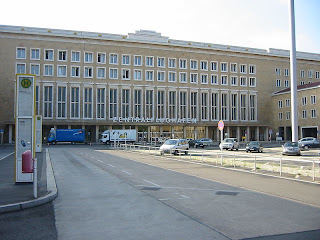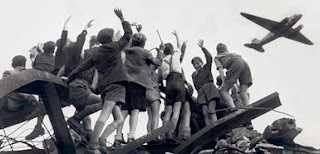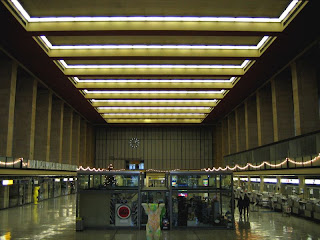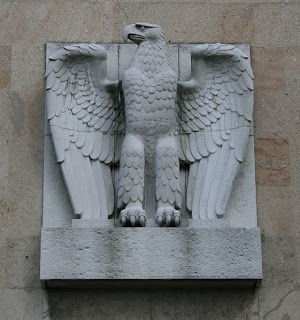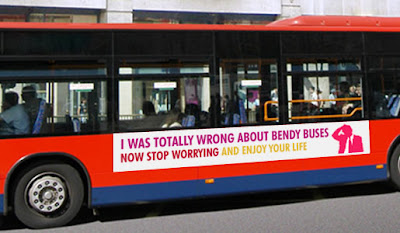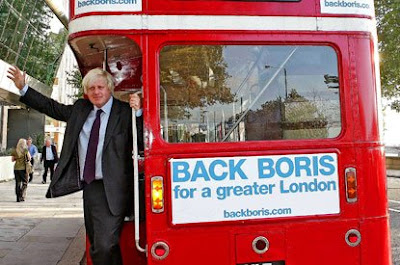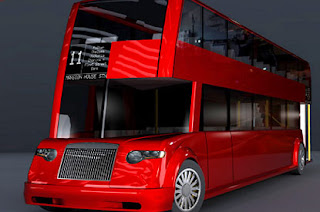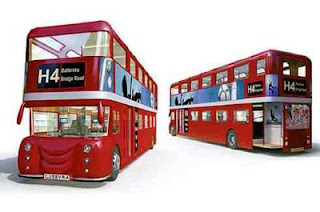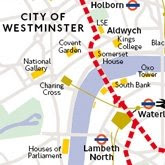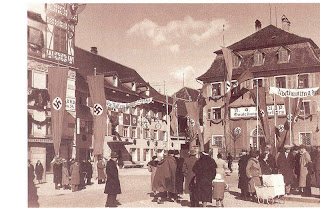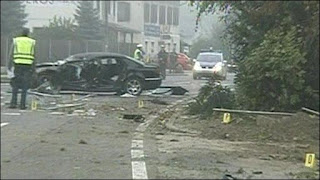
Gatwick South Terminal
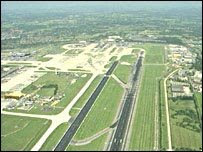
The UK's second-largest airport, Gatwick, has been put up for sale by its owner BAA. The move comes four weeks after the Competition Commission said BAA may have to sell three of its UK airports because of market dominance concerns. Several firms are said to be interested in buying Gatwick, which has been valued at £1.8bn by regulators. The Airport unit of Spanish builder Grupo Ferrovial provides a poor service and has failed to plan for extra capacity, the UK Competition Commission said, recommending it be stripped of London's Gatwick and Stansted airports and either Glasgow or Edinburgh in Scotland. On top of this BAA has been again fined for the poor service at Gatwick, a total of £3.26 million for consistently failing to meet standards for cleanliness, directions, seating and pier services.
"Despite this performance improvement, acceptable standards have not yet been achieved," the CAA said.
Potential bidders for Gatwick include Australian company Macquarie, Germany's Fraport, and the owners of Manchester airport. Virgin Atlantic said it would also be interested in bidding as part of a consortium. "We are delighted that BAA has ended the uncertainty over Gatwick's future," said Steve Ridgway, Virgin Atlantic chief executive. "Virgin Atlantic would relish the opportunity to bid for Gatwick as part of a consortium and inject our customer service expertise into any future running of the airport."

However there were misgivings at the Unite trade union, whose national officer, Steve Turner, said: "It simply beggars belief that a 'For Sale' sign can be hung across the country's second largest airport. "Gatwick is a core component of the national infrastructure and an essential part of the UK's aviation sector, yet it is to be flogged off with little care for the wider social impact." In a statement, BAA said it had decided to begin the process of selling Gatwick "immediately". The Civil Aviation Authority has just increased the amount Gatwick - where 35 million passengers passed through in 2007 - can charge in landing fees. But it is operating on one runway and approaching full capacity.
Budget airline Easyjet said Gatwick was a "local monopoly" and called on any reform of airport regulation to "put the needs of customers first". And sector rival Ryanair said: "This morning's announcement... is just the latest attempt by the BAA monopoly to get itself off the hook of the Competition Commission's recommendations."
London Gatwick airport is the UK's second largest airport and the world's tenth busiest international airport, carrying more than 35 million passengers each year. In 1931 what is now known as London Gatwick airport was a private airfield owned by Home Counties Aviation Services. Serious development was later carried out and the first terminal, together with taxiways and aprons, was opened in 1936. Passengers arriving by train could walk into the airport through subways and covered walkways.
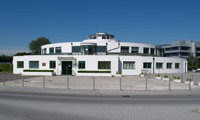
Gatwick's 1930 Terminal - Art Deco and the "round" terminal design to maximise aircraft parking space which has been copied the world over
During the war Gatwick, which was used as a Royal Air Force base, expanded further by acquiring a local racecourse. However, when it was returned to civil use in 1946, it was still basically a grass airfield. In 1953 the Government decreed Gatwick as London's second airport. The old airport was closed for major redevelopment. When it officially reopened three years later, Gatwick had been transformed into a modern facility with a 2000 feet runway, a terminal incorporating a rail station and a covered pier linking terminal with aircraft, the first of its kind in the UK.
Charter traffic became big business in the 1980's with more than a million passengers then using Gatwick. The terminal was extended and two more piers built. Gatwick still ranked only fourth busiest among UK airports but British United Airways, then the main operator, was steadily introducing scheduled services. In 1978London Gatwick Airport became a transatlantic gateway. By the time Delta, Braniff and British Caledonian started up their routes to the USA; Gatwick had already extended its runway to handle the long haul jets and further improved the terminal. Passenger traffic hit the 10 million mark in the 1990's and continued to grow at a phenomenal rate, reaching over 35 million in 2007. The South and North Terminals opened as Gatwick established itself as Britain's second busiest airport and an international player. Gatwick is anxious to build a second runway to meet growing demand, but there is strong opposition from local residents and environmentalists.
BAA is to airports what Coca-Cola is to the soft drinks industry: it pretty much owns the lot. All the big airports such as Gatwick, Heathrow, Stansted, Manchester, Glasgow, Aberdeen and more, are owned by the giant firm. However, things might all be about to change and the disastrous year that the aviation industry has had in the UK might be about to knock the school bully off his perch. The muscle that BAA yields promoted an investigation from the Competition Commission, which concluded that such a monopoly on the industry was not healthy and that it might be forced to sell off some of its airports.
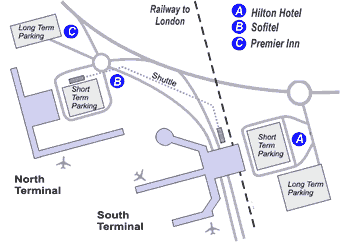
Financial pundits from investment houses and other rarefied places speculate as to whether the owner of 7 of the UK's airports has any chance of sorting out its debts. Ferrovial took on £10 billion worth of debt to buy BAA last year, and now those money turkeys are coming home to roost. Going cap in hand to its shareholders raised £500 million but even that can't save the ailing company. Now hacks are speculating that if BAA cannot sort its finances out in the next two months, bondholders will be able to take their £3 billion investment back, potentially bankrupting the company. These Bondholders are worried as Grupo Ferrovial’s debt has been downgraded to junk bond status by Standard and Poors, so not much comfort there!
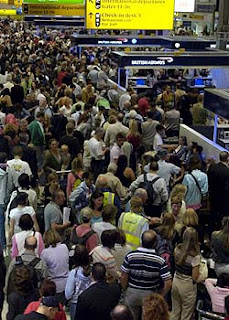
The airport is split into two terminals, North and South. South Terminal is the larger one, and holds the train station and majority of the shops, including Gatwick Village shopping arcade with practical shops such as Boots (UK pharmacy chain like Guardian) and W H Smith (general store selling books, newspapers, sandwiches, drinks etc.). This is accessible before heading through to departures. The entrances are beyond the check-in desks. Also, there is a sky train linking the two terminals 24/7, and the terminals are quite close together, unlike Heathrow T4, so it's perfectly possible to catch a bus or train to South, even if you fly from North. Most, if not all National Express bus services that serve the airport call at both terminals anyway.
Once upon a time, Gatwick Airport was modern. Now it is looking very tired and dated. Most European capitals have modern airports, but at this airport there are only the shops and bland sandwich bars that are up-to-date. The arrivals/baggage collection area is antiquated and due for a makeover. The car parking is very expensive, and you should always factor this in to any air fare, as it may cost more than the flight! The toilets are poorly ventilated, and they are smelly, and are only basically cleaned. The owner (BAA) seems to give priority to shopping, and often basic infrastructure, i.e. walkways, lifts and the small shuttle are out of order!

Southern and Gatwick_Express Trains at Victoria
But first you have to get to Gatwick and this can seriously dent your perspective of your bargain flight. As already noted car parking can be seriously expensive with Short Stay Parking at the Terminal being £20.90 a day and Long Stay being £9.00 a day for the first 6 days. Gatwick does have a dedicated train service in the Gatwick Express which is well and separately run and uses dedicated modern rolling stock, a sharp contrast to the alleged Stansted Express which has 20 year old clapped out commuter stock and whose title alone should be grounds for prosecution under the Trade descriptions Act. The Gatwick Express leaves every 15 minutes (During weekdays) from Platforms 13/14 at London Victoria station and takes 30 minutes to Gatwick. It also runs (normally hourly) through the night so it can both get you home from a late flight and out to an early flight unlike the Stansted Express which can do neither. That is the good news; the bad news is that it is eye wateringly expensive for a 30 minute train journey. A single First Class Ticket will cost £25.60, almost £1 per minute. What do you get other than a generous seat in a somewhat utilitarian interior for this? Well last time the trolley came around while we were still in Victoria. “Coffee or Tea, Sir” said the smartly attired attendant. Well I thought al least you are getting something for the inflated ticket price. “Coffee, I replied.” “Thank you sir that will be £2.20.” So that is the value added perception for the expensive fare, you get absolutely nothing with it! And if I had wanted biscuits that would have been 80p extra! There are cheaper alternatives using Thameslink (which goes from Bedford to Brighton via Luton thru' Eurostar at Kings X / St Pancras and Luton) and Southern Trains stopping service from Victoria which takes 45 minutes.
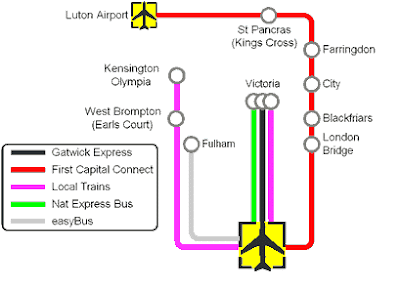
Getting to the airport disabled access from the platforms to the airport is good with lifts serving all platforms and step free access into the terminal. However from here on in the airport does not live up to the somewhat corny slogan used by BAA “Getting your journey off to a flying start.” Firstly what was the gateway to the Departure area is no longer used and a gaggle of annoyingly named PSA’s (Passenger Service Assistants) direct you into a somewhat awkward chicane nearby. Here you are kept in a slow moving queue for no other reason than they take a digital photo which is electronically matched to your boarding card. This is again checked when you board at the gate resulting in longer queues in both places. Is this a Government security requirement? Well no actually the only reason for doing this and delaying customers (not to mention intruding on their privacy) is to allow BAA to mix domestic and international passengers in the terminals giving them more shopping “opportunities”, just what passengers say they always want at airports?
Then instead of going on the flat you have to go upstairs on an escalator to a cramped security area. If you are mobility impaired (i.e. 10% of the population) you have to ask and you are directed to another area which is something of a walk but hey-ho, disabled people just love walking!

The security area is basic with no assistance offered to disabled people, no solid chairs with armrests for older people to sit in and, more importantly, get out of. Passengers are being asked to take off socks but no covers are being offered and of course there is no way to sanitise a carpeted surface. Lucky for BAA most of these infections will be apparent when the self loading cargo are abroad. Still, it makes you wonder why local councils employ Environmental Health Officers when such a blind eye is turned to lack of basic hygiene. How does the CAA continue to licence transport facilities which continue to laugh in the face of Phase 3 of the Disability Discrimination Act 1998? Does the CAA feel no moral obligation to ensure the law of the land is respected and disabled and older people are treated with respect? What is the paradigm here “let the wobbly people sue us?” The area is crowded, queues are long and there is the usual chaos associated with the scarcely trained minimum wage staff employed by ICTS whose disgraceful lack of standards at Birmingham Airport were exposed by the BBC’s Panorama programme.
Recently BAA have come under fire from a senior Labour MP who took a seven-inch knife on to a plane at Gatwick. Former health minister Gisela Stuart told a Commons debate on the airport that she mistakenly had the knife in her hand luggage when she went on holiday to Corsica on 3 August 2008. Ms Stuart discovered the knife with a three-inch blade on arrival and asked her office manager in Birmingham to get in touch with Gatwick to tell them of the security breach. The MP for Birmingham Edgbaston was told on 22 August that security staff were being retrained. Ms Stuart also highlighted the report that EU inspectors smuggled replica bomb components past security at Gatwick this year and doubts whether security at the Sussex airport has been adequately improved.
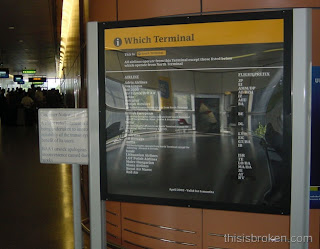
The Daily Mail Newspaper reported the week after I went through this “security” shambles;
“Replica bombs were smuggled into Britain's second busiest airport inside hand luggage during a safety inspection, it has been claimed. Gatwick Airport staff apparently failed to recognise the artificial explosives even though a bag containing one device was allegedly identified as suspicious by an X-ray scanner but returned to its owner after the guards did not realise what it was. The alleged breaches occurred during a European Commission inspection this month.” – Daily Mail, 19 October 2008.
So reassured we then enter airside and the reason for the awkward arrangements became obvious for you emerge into the enlarged Food Court built on top of Gatwick South’s shopping area. You have no less than 14 catering outlets but this is Clone Town Britain on steroids, there is no shape or form, or indeed any attempt at design or theme to the catering area. What you have is a large shed with a hole in the middle for escalators and around it wall to wall shop fronts and signage of chain catering, bar and fast food outlets. It is not relaxing as so little area is devoted to seating or general circulation and the constant din of bad music played through bad speakers. There is no possibility of escaping from this as each outlet has the same nonsensical piped music playing inside. An insight into how the shed engineer (I can’t believe there was an architect involved) has thought about having a sense of enclosure, quiet areas and an opportunity to relax before your flights can be gained from noting that the only (crowded) seating area is in front of the fruit machines and games area so you have continuous noise, pings and kerrangs from the machines.

Gatwick Airport Security Lines
Then the self loading cargo, who had to go upstairs to security, now have to go downstairs to the crowded and chaotic “shopping opportunity” area for the gates are on this level. You go through “holes in the wall” to the gates through drab corridors. Here you see broken lights, bad signage, stained carpets, grubby walls, closed loos and out of order travelators before you arrive at your gate. Instead of being roomy and open plan this is dingy and enclosed because, wait for it, they have to check your photo against your boarding card. This takes three people but hey ho you are paying for it and the retail wallahs who run the Grupo Ferrovial debt servicing operation known as BAA feel these awkward arrangements and lack of straight lines for customers who, let's face it, just want to catch a plane, are worth it to increase “footfall” and passenger “dwell time” to “maximise” the value of its “retail estate.” Indeed! There only approach to airport design and management is, if there is a spare space stuff something retail into it!
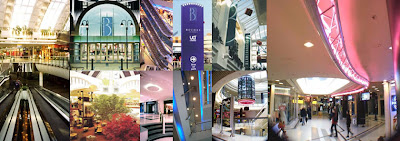
The Gatwick ambience!
So there you are 180 people waiting in an area with 40 seats and I feel like getting a cold drink at non-Ryanair prices to bring onto the plane. I needn’t have bothered for in an uncanny reflection of the Airport the only vending machine in our passenger holding pen is out of order. Then it is time for the self loading cargo to shuffle with defeated resignation down the stairs (yah, boo sucks to the wobbly people the lift was not working and no assistance was offered) where they are then held for 5 minutes before shuffling resignedly onto the plane. Take off never seemed so good for we were leaving Gatwick behind in the conviction that anywhere else must be an improvement.
Thankfully I didn’t need to re-enter Britain through the shabby Gatwick Gateway. Dublin Airport was a wonderful contrast, bright and modern with good, well trained and polite security and a real sense of place which said Ireland is proud of its capital city and its airport is proud to give a positive impression to visitors. The shopping and catering is excellent and showcases the country, as it should in any major airport. Even coming in through utilitarian Luton was excellent. The airport contrasts with Gatwick in beeing clean, bright and with logical circulation patterns and it took me all of 5 minutes to walk off the plane and into the public area of Luton.
As for BAA thinking that Richard Branson will give them £1.8 Bn before they go bankrupt for the damaged goods called Gatwick, they must be deeply delusional. Branson won’t offer anything like that and will bring in somebody with him to share the risk, He will discount the income for he’ll have to rip out half the forgettable retail clutter to make the airport work well and ease the passenger’s journey to and from the plane (the PURPOSE of an airport; make a note BAA). However the chaos which is Gatwick shows why BAA does not understand the Airport business and why this smug privatised monopoly is lacking in the core skills to run ANY UK airport. The sooner Grupo Ferrovial and the Gang of Cash Cow Gringos it has bought in the UK with its junk bond status debt goes down the better for UK PLC. Their comes a stage when it is kinder for Old Beasts to be quietly and humanely put down to end their suffering and the upset of those who have to witness their sad and jerky movements.
